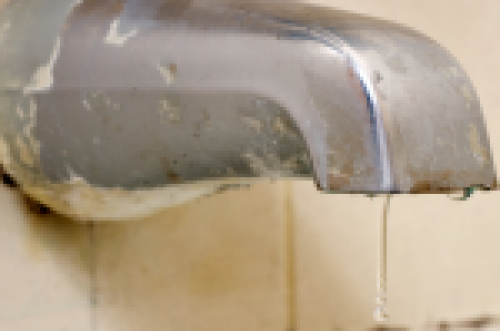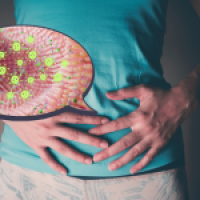Recognizing the Symptoms of Mold Toxicity

Article Summary
Mold toxicity happens when people are exposed to harmful mold toxins, called mycotoxins, found in damp indoor spaces or certain foods. These toxins can cause many symptoms, including coughing, headaches, fatigue, and brain fog. Some people, like those with asthma, allergies, or weakened immune systems, are more likely to have severe reactions. Mold exposure often occurs in places with poor ventilation or high moisture, such as bathrooms and basements, and can also come from food like grains or nuts.
Mold can lead to serious long-term health problems if not addressed. It can harm the immune system, cause autoimmune diseases, and increase the risk of chronic illnesses like neurodegenerative diseases and inflammatory disorders. Preventing mold growth is essential to avoid these issues. Steps include fixing leaks, using dehumidifiers, and regularly cleaning areas where mold can grow. Checking for hidden mold behind walls or carpets after water damage is also important.
If you suspect mold toxicity, you can try natural remedies like activated charcoal, milk thistle, or probiotics to help your body detox. However, if symptoms continue, it’s important to seek help from a healthcare professional who can perform tests and create a treatment plan. Mold toxicity can also affect mental health, causing anxiety, depression, or memory problems. Taking quick action to remove mold and support the body’s recovery can make a big difference in improving health and well-being.
Want to know more details?
Check out the full article below.
Are you grappling with persistent, unexplained symptoms despite trying various over-the-counter medications? The culprit might be mold toxicity, a more common issue than you might realize. Understanding the signs of mold toxicity and how exposure occurs is crucial knowledge to safeguard against mold-related illnesses.
What is Mold Toxicity?
Mold toxicity is a set of symptoms resulting from exposure to mycotoxins caused by mold growth in indoor environments or food mold intake. While airborne mold spores are generally harmless, their growth in moist, stagnant places leads to the production of mycotoxins, triggering an inflammatory reaction by the immune system. This post explores different mold species, including the infamous ‘toxic black mold,’ and emphasizes the importance of professional mold removal for black mold exposure.
Symptoms of Mold Toxicity
Recognizing mold toxicity symptoms is challenging as they often mimic other allergic or immune issues. Common symptoms include persistent coughing, red and watery eyes, rashes, chronic sinus infections, headaches, brain fog, fatigue, and more. The severity of symptoms may be heightened for individuals with seasonal allergies, respiratory conditions, or asthma.
Who’s at Risk for Mold Exposure?
Exposure to damp and moldy environments is the primary factor for developing mold illness. Certain individuals, such as those with mold allergies, asthma, weakened immune systems, or chronic diseases, may experience more severe reactions. The post explores the correlation between mold exposure and conditions like chronic fatigue syndrome (CFS), multiple sclerosis (MS), and the potential link with vitamin D deficiency.
Testing for Mold Exposure
Diagnosing mold illness is complex, mainly focusing on the body’s immunologic and inflammatory responses to mold. Blood or urine tests identify antibodies and metabolites related to mold and mycotoxins. Mold allergy tests measure sensitivity to specific molds, and certified inspectors can evaluate indoor settings for mold sources.
The Functional Medicine Approach to Treatment
Treating mold toxicity involves a multi-step process, addressing the environment, diet, lifestyle changes, and supplements to support detoxification pathways. Eliminating mold exposure, optimizing detoxification, lowering inflammation, and working with a provider to address underlying fungal infections are key components of the treatment approach.
Living with mold toxicity can manifest in various symptoms, making proper diagnosis challenging. If you suspect exposure to mold, seeking guidance from a qualified integrative health provider is essential. Understanding the signs and taking proactive steps can help unravel the mystery of mold toxicity and pave the way to better health.
How Does Mold Exposure Happen?
Mold exposure typically occurs in damp, poorly ventilated areas such as bathrooms, basements, and kitchens, where moisture encourages mold growth. Leaky roofs, plumbing issues, and flooding can also create ideal conditions for mold to thrive. Beyond indoor environments, mold can be present in certain foods like grains, nuts, and coffee, which may harbor mycotoxins. Inhaling airborne spores or consuming contaminated food allows mold and its toxins to enter the body, triggering symptoms of mold toxicity.
Types of Mold and Their Risks
Not all molds are equally harmful, but certain types pose significant health risks. For example, *Stachybotrys chartarum*, commonly known as black mold, is notorious for producing potent mycotoxins that can cause severe respiratory and neurological issues. Other molds, like *Aspergillus* and *Penicillium*, can also release toxins that affect the immune system and lead to chronic health conditions. Recognizing these molds and addressing them quickly is critical for maintaining a healthy environment.
Long-Term Health Impacts of Mold Toxicity
Chronic mold exposure doesn’t just cause immediate symptoms—it can also have long-term effects on health. Prolonged exposure to mycotoxins can contribute to the development of autoimmune diseases, hormonal imbalances, and chronic inflammatory response syndrome (CIRS). Some studies suggest links between mold toxicity and neurodegenerative diseases like Parkinson’s and Alzheimer’s. These long-term risks highlight the importance of early detection and intervention.
Steps to Prevent Mold Growth
Preventing mold growth in your home is essential for avoiding mold-related illnesses. Here are a few strategies to keep mold at bay:
1. Control Moisture: Fix leaks, dry wet areas promptly, and use dehumidifiers in damp spaces to reduce humidity.
2. Improve Ventilation: Ensure proper air circulation in high-moisture areas like bathrooms and kitchens by using exhaust fans or opening windows.
3. Regular Cleaning: Clean and inspect areas prone to mold growth, such as shower curtains, basements, and under sinks.
4. Check for Hidden Mold: Mold can grow in unseen places like behind walls or under carpets, so it’s important to inspect these areas periodically, especially after water damage.
Natural Remedies to Support Detoxification
Once exposure to mold is addressed, the body may still require help in removing toxins. Several natural remedies can aid detoxification:
1. Activated Charcoal and Bentonite Clay: These binders can help trap and eliminate mycotoxins from the gut.
2. Milk Thistle: A liver-supporting herb, milk thistle helps the body process and eliminate toxins.
3. Glutathione: This powerful antioxidant supports the body’s detoxification pathways and protects cells from damage caused by mycotoxins.
4. Probiotics: Mold exposure can disrupt gut health, so restoring balance with probiotics can support digestion and immune function.
When to Seek Professional Help
While many cases of mold toxicity can be managed with preventive measures and natural remedies, some individuals may require professional intervention. If symptoms persist or worsen despite efforts to remove mold and detoxify, consulting a functional medicine provider is essential. These experts can perform advanced testing, create personalized detox plans, and address underlying conditions that might be exacerbating symptoms.
Mold Toxicity and Mental Health
Mold toxicity doesn’t only affect physical health—it can also have significant impacts on mental well-being. Mycotoxins can interfere with neurotransmitter function, leading to mood swings, anxiety, depression, and cognitive issues like memory loss. For those experiencing unexplained mental health challenges, investigating potential mold exposure may uncover a hidden cause.
Take Action Against Mold Today
Mold toxicity is a serious but often overlooked health concern that can affect anyone. By recognizing the signs of exposure, preventing mold growth, and addressing symptoms with a combination of environmental changes, detoxification strategies, and professional support, you can protect yourself and your loved ones from the dangers of mold toxicity. A proactive approach is the key to maintaining a healthy, mold-free home and body.

Further Reading: Mold and Mycotoxins
- Recognizing the Symptoms of Mold Toxicity
- How mycotoxins impact our energy production and mitochondria
- Mold: A frequently overlooked cause of invisible illness
- Mycotoxin Binders
- Understanding the Citrinin Mycotoxin
- Could mold be causing your Mast Cell Disorder?
- How mycotoxins impact our energy production and mitochondria
- Why Mold Detox is Harder with MCAS



